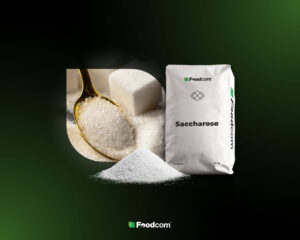- Drought and fires in Brazil have destroyed a large area of the sugar cane crop.
- There is talk of reduced yields and an early end to the season, which could affect the availability of sugar for export early next year.
- Sugar prices are on the rise – a weekly increase of up to 16% is forecast, the highest since 2008.
- Increases in sugar, cocoa and coffee prices are likely to affect food prices, particularly for confectionery.
Fires in Brazil destroy sugar cane crops
Brazil, a leading sugar producer, has recently been suffering from drought and fires that are destroying fields – including sugar cane crops. Up to 450,000 hectares of fields could be affected across the country. In August, a record number of fires hit the Sao Paulo area, which is a key crop in central-southern Brazil. Yields had already been reduced since last October due to the worsening drought. Lack of moisture and fires have damaged plants right down to the roots, which may force producers to replant sugarcane or reduce yields in the coming season.
Already, poor yields this season are predicted to force producers to end the season prematurely and stop processing cane into sugar as early as the end of October. Weather forecasts do not predict increased rainfall, and even an improvement in the weather in October would probably not result in significant benefits for the current crop.
Weather disaster in Brazil affects global sugar prices
Changes in farm prices take time to be reflected in the prices of items available in shops. However, the weather phenomena in Brazil has caused sugar production forecasts to fall significantly, affecting sugar futures prices. There is also the prospect of a reduction in the global availability of sugar for export in at least the first quarter of 2025.
The recent price rise puts sugar on track for a sixth consecutive annual increase, putting increased pressure on food producers. This week, the price of sugar futures could rise by up to 16%, which would be the highest weekly increase since June 2008. The jump in sugar prices coincides with a rise in the price of other foodstuffs, such as coffee and cocoa, which could affect the price of desserts and confectionery.
![Biggest sugar price spike since 2008 – a threat to food prices? [World News] Biggest sugar price spike since 2008 – a threat to food prices? [World News]](https://foodcom.pl/wp-content/uploads/2023/09/Foodcom_World_News_Additives-1520x760.jpg)






